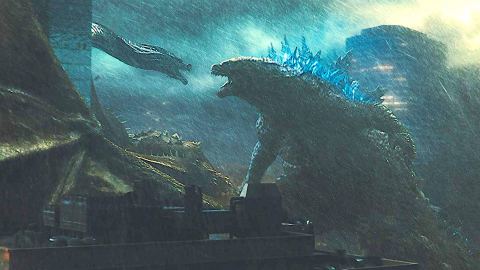Science in pop culture

Nothing like going head-to-head against the geography teacher’s son in the finals of the geography bee while the entire school watches.
We each got the same questions. Crater Lake, North American timber exports—we were evenly matched on the first several topics. Then we were asked about the units for measuring latitude and longitude: degrees, minutes, and seconds. “How did you know that one?” folks wondered after my correct answer gave me an edge. “I read it in a book: 20,000 Leagues Under the Sea.”
Dr. Frankenstein attends a demonstration of galvanism and wonders if a human could be fully re-animated. From there, the story departs the actual science. While electrical impulses mediated by nerve cells do animate our muscles, a great deal of other biophysics and biochemistry constitutes life. Jump starts cannot substitute for our entire physiology. Even recent success keeping pig brain cells viable and responsive for a time after death is a far cry from Victor Frankenstein’s monster.
Since authors draw from what they know, science fiction stories provide great opportunities to be introduced to real science. Some stories are more faithful than others, and as with Frankenstein, the factual intermingles with the fantastic. If the science in a story excites you, consider channeling that enthusiasm into a trip online or to the library to find out how much was real. For more inspiration, here are a few examples.
At the movies
Let’s start with a legendary movie monster, Godzilla, whose most recent edition, King of the Monsters (pictured at top) just opened in theaters. Godzilla was originally conceived as a parable about the dangers of nuclear power. Radioactivity is certainly potent. Large amounts of energy are stored in atomic nuclei; releasing that energy can be devastating, and also useful if properly controlled. When living organisms encounter the high energy particles released from radioactive material, those particles can burrow to the center of their cells and disrupt the chemistry of their DNA, causing mutations.
The Godzilla films draw inspiration from the intersection of physics and biology to imagine mutated creatures of enormous size. Biophysics also tells us that bodies as we know them can only grow so large. Just the sheer weight would strain the limits of bones and muscles, not to mention the blood pressure needed to circulate oxygen throughout such a body. (If you want a realistic story about what radiation can actually do to an organism, check out Chernobyl, now airing on HBO.)
The characters’ response to the pandemic is similarly realistic. Epidemiologists employ legwork and detective skills to identify commonalities between the earliest patients, sometimes at risk to their own health. Infected patients are quarantined. Mathematical models show how the disease spreads and how to make the most of limited resources. A vaccine is developed via risky yet tedious lab work, and doses are given out by lottery as they are manufactured for maximum benefit and fairness.
On the page
Novels can afford to dive more deeply into real science. They aren’t constrained by run time or the need to represent information visually, and authors can count on readers to set their own pace for challenging material. Neal Stephenson, for example, is not shy about devoting several pages at a time to educating the reader.
In Seveneves, Stephenson turns his attention to orbital mechanics to describe the perils faced by space travelers. Earth becomes uninhabitable, and on short notice the best solution was to launch as many survivors as possible into orbit where they forge a colony of networked spacecraft. Having survived the orbital obstacles, they face a biological hurdle. Population genetics tells us that such small founder populations run higher risks of genetic diseases because of limited diversity, which puts the long-term viability of the colony in jeopardy.
Sue Burke’s Semiosis, a story about colonists settling on an unfamiliar planet, takes us deeper into space to teach us about biology which seems alien yet is deeply terrestrial. Recent discoveries in the molecular biology and physiology of plants figures prominently into the story. As far as we know, plants here are not conscious and self-aware like the plants in the book. Still, Earth’s plants communicate and process information from their environment similar to what Burke describes. The way her plants influence and manipulate the animals that eat them using alkaloids is also realistic; terrestrial alkaloids include nicotine and caffeine.
In the comics
Closer to home, the comic book mini-series Surgeon X by Sara Kenney, John Watkiss, James Devlin, et al. shows us a near future where widespread antibiotic resistance renders most infections untreatable. The scenario may be worst-case, but the science is soberingly sound. We need only remember what life was like a century ago to see what will happen if our antibiotics become universally ineffective. So many surgical treatments, cancer therapies, and other aspects of modern medicine rely on antibiotics to mitigate the associated infection risks. Without them, some of our cures may wind up no better than the disease.
These examples are just a small sample. Whether somber or silly, cosmic or cyberpunk, in the multiverse or in The Matrix, sci-fi stories can be a great way to learn something about science in a narrative form that’s easier to contemplate. That can be especially helpful when the science gets abstract. And even if you never plan to be a scientist, you never know when a little extra science knowledge might come in handy.
The post Science in Pop Culture appeared first on ORBITER.





